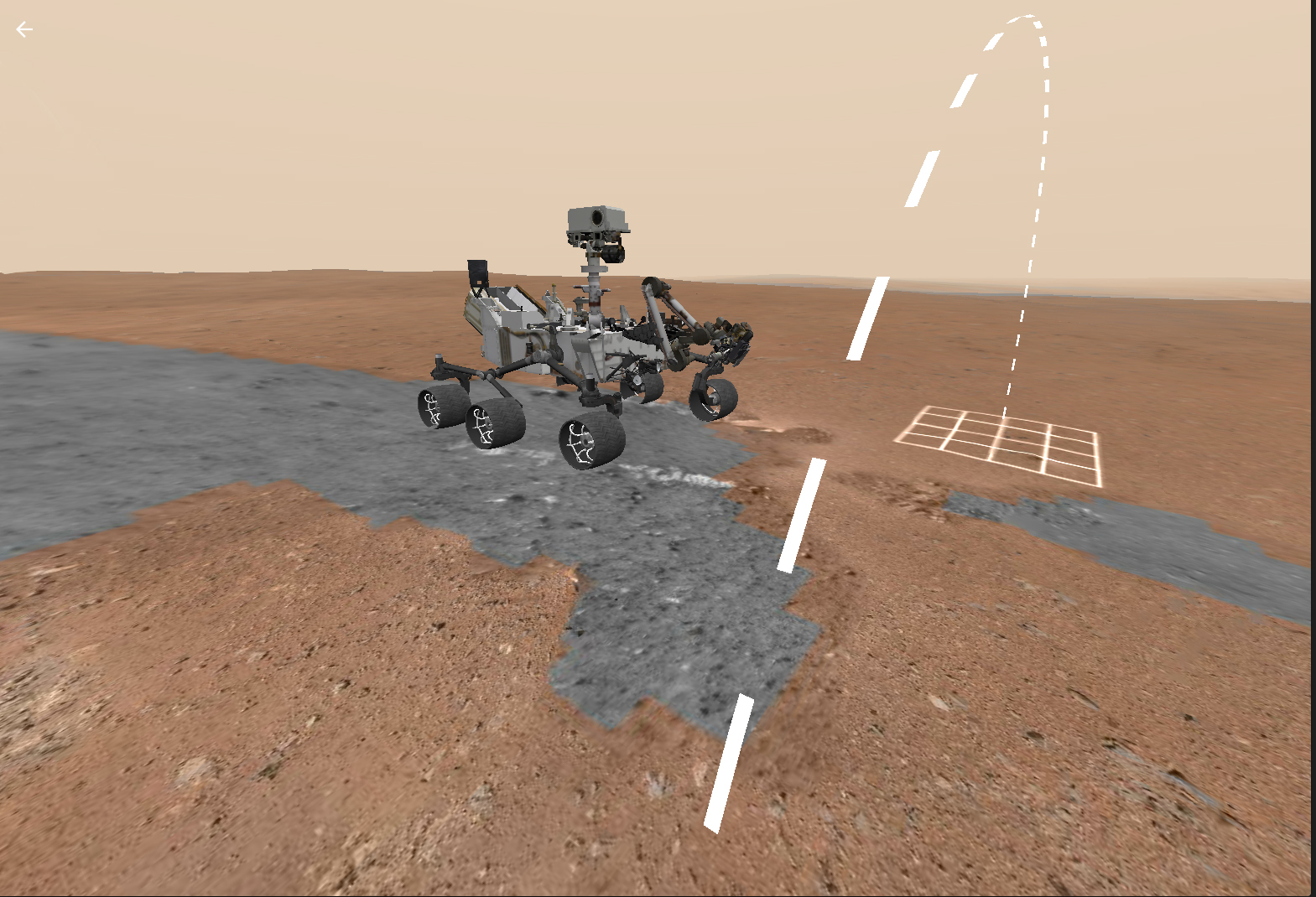Access Mars: Follow the Curiosity Rover's Tracks in Virtual Reality
For two years, NASA scientists have been plotting the path of the Curiosity Mars rover using a Microsoft HoloLens mixed-reality headset and software called OnSight. With this technology, all scientists have to do to figure out where to go is look in the relevant direction, and walk over.
Now, the public can have a similar experience. A new website called Access Mars lets you explore Curiosity's neighborhood using your desktop computer, mobile device or virtual/augmented-reality headset. While scientists can use OnSight to plan Curiosity's path or do free wandering, the public has a more limited view of Curiosity's past locations of interest.
"Access Mars lets anyone with an Internet connection take a guided tour of what ... scientists experience," NASA officials said in a statement. The program allows viewers to learn more about Curiosity's mission and to look at objects of interest. [Amazing Mars Rover Curiosity's Latest Photos]
"Users also can visit four sites that have been critical to NASA's Mars Science Laboratory mission: Curiosity's landing site; Murray Buttes; Marias Pass and Pahrump Hills," NASA officials added. "Additionally, the rover's latest location on lower Mount Sharp will be periodically updated to reflect the mission's ongoing progress."
Access Mars was developed by NASA's Jet Propulsion Laboratory in collaboration with Google (Microsoft was not listed as a participant), and represents just one of several efforts to create immersive experiences. You can tour the Mars rover sites, the International Space Station and other locations through Google Expeditions, a free immersive app.
Visitors to the Kennedy Space Center Visitor Complex in Florida were able to "walk on Mars" in the 2016 "Destination: Mars" exhibit, which is also based on the OnSight platform.
"We've been able to leverage VR [virtual reality] and AR [augmented reality] technologies to take our scientists to Mars every single day," said Victor Luo, lead project manager at JPL's Ops Lab, which led the new collaboration. "With Access Mars, everyone in the world can ride along."
Breaking space news, the latest updates on rocket launches, skywatching events and more!
The Curiosity mission landed in Mars' Gale Crater in 2012 and reached its ultimate science destination, Mount Sharp, in 2014. The rover is exploring the various layers of the mountain to learn more about conditions for habitability; Curiosity has found evidence of water in Mars' ancient past throughout the rover's expedition.
Follow us @Spacedotcom, Facebook and Google+. Original article on Space.com.

Elizabeth Howell (she/her), Ph.D., was a staff writer in the spaceflight channel between 2022 and 2024 specializing in Canadian space news. She was contributing writer for Space.com for 10 years from 2012 to 2024. Elizabeth's reporting includes multiple exclusives with the White House, leading world coverage about a lost-and-found space tomato on the International Space Station, witnessing five human spaceflight launches on two continents, flying parabolic, working inside a spacesuit, and participating in a simulated Mars mission. Her latest book, "Why Am I Taller?" (ECW Press, 2022) is co-written with astronaut Dave Williams.

